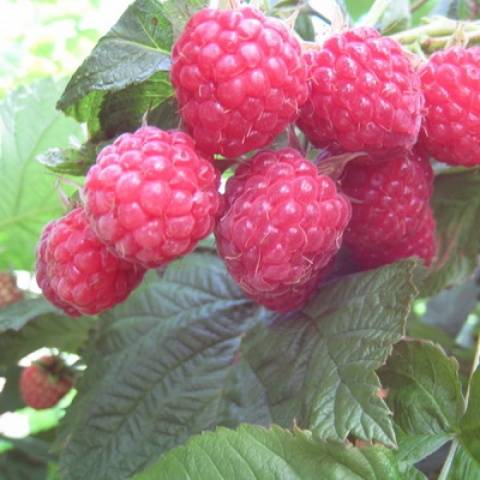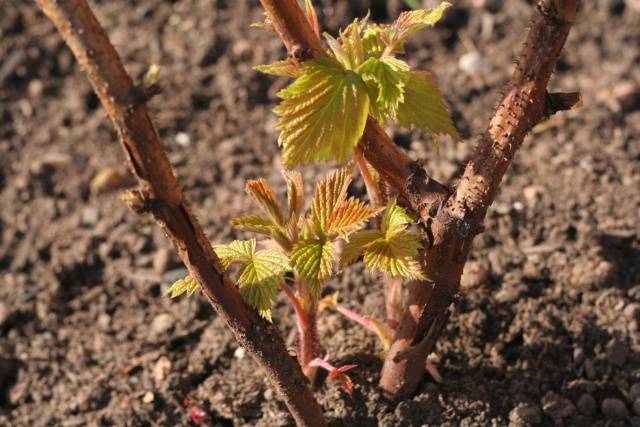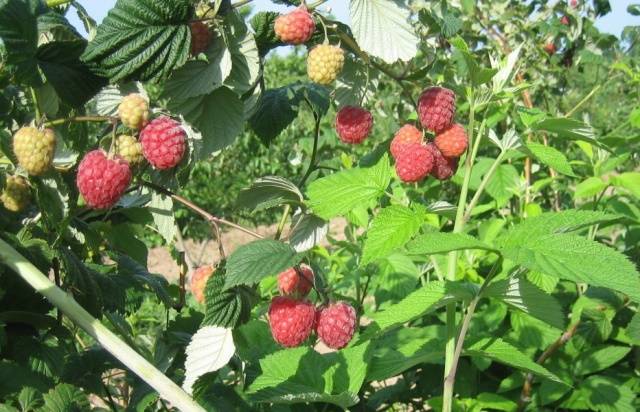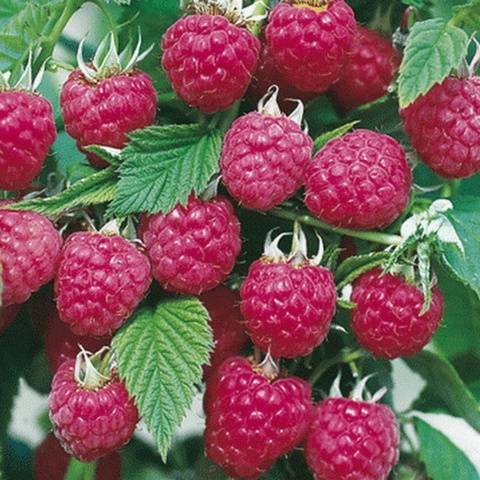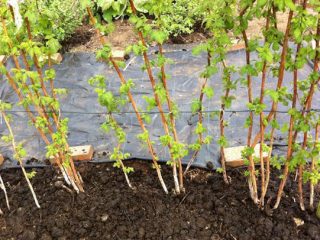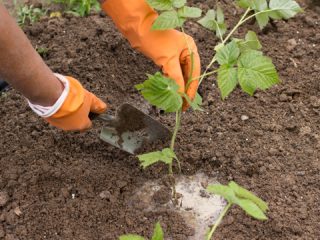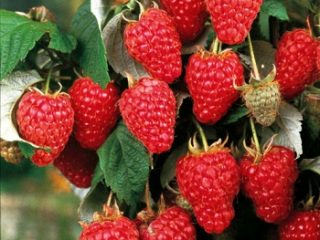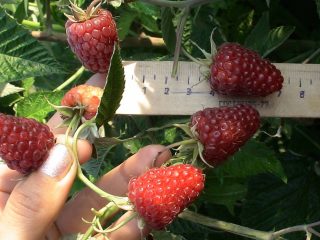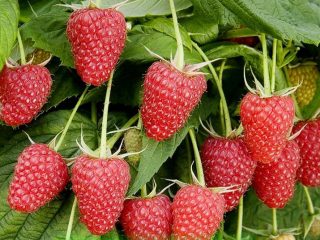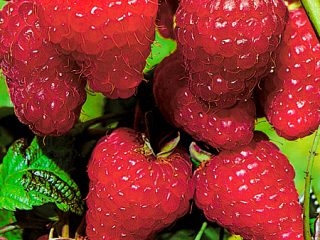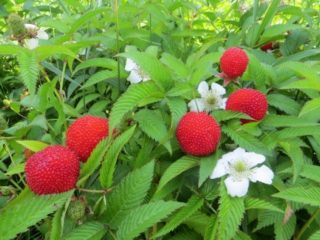Content
Raspberry Penguin is a productive remontant variety, bred by I.V. Kazakov in 2006. Compact bushes are decorative and require minimal maintenance. Raspberry Penguin bears fruit early.
Botanical description
Characteristics of the raspberry Penguin variety:
- remontant variety;
- early maturation;
- fruiting from July to October;
- upright bush of the standard type;
- plant height up to 1.5 m;
- leaves are green, slightly wrinkled;
- biennial brown shoots;
- the presence of short thorns, most are located in the lower part of the shoots;
- annually the bush releases 4-6 shoots.
Description of the fruits of the Penguin variety:
- rich crimson color;
- rounded conical shape;
- dense pulp;
- small drupes;
- sweet and sour taste;
- the average weight of raspberries is 4.2 g, the largest is 6.5 g;
- tasting score - 3.7 points out of 5.
The taste qualities of the Penguin variety are rated as average. Due to its low sugar content, the variety is inferior in taste to other varieties.
The yield of the Penguin variety is high, about 9 t / ha. Raspberry bushes are compact and do not need additional support.
Berries of the Penguin variety are suitable for fresh consumption. Due to its dense structure, raspberries endure long-term storage and transportation. Jam, compotes, smoothies are prepared from berries or frozen for the winter.
A variety of varieties is the Royal Penguin raspberry. According to the description, photos and reviews, the Royal Penguin raspberry variety brings larger berries weighing up to 10 g. Up to 10 kg of fruits are harvested from one bush.
Among the new varieties, the Yellow Penguin raspberry deserves attention. The repairing variety produces berries weighing up to 8 g, round in shape and bright yellow in color. The taste is sweet, dessert, with sourness.
Planting raspberries
Raspberry Penguin is planted in a prepared area. When choosing a site for planting, light, soil quality and groundwater level are taken into account. Saplings are purchased from reliable growers or obtained from the original bush.
Selection of seedlings
Saplings of the Penguin variety are purchased in nurseries. Healthy specimens with a developed root system should be chosen.
In the presence of a mother bush, remontant raspberries are propagated in the following ways:
- root suckers;
- cuttings;
- dividing the bush.
When self-propagating, they dig out the root shoots of raspberries 10 cm high. The plants are transplanted into a greenhouse and watered abundantly. After a couple of weeks, when the raspberries take root, they are transplanted to a permanent place.
In the fall, it is more convenient to propagate the raspberry variety Penguin by root cuttings. When loosening, a root is dug up and divided into strips 8 cm long. The cuttings are placed in furrows to a depth of 7 cm, covered with soil and watered. During the next season, young plants will appear, which are looked after by watering and feeding.
When transplant Raspberry Penguin is dug up from the root, which is divided into parts. The sections are treated with charcoal. The culture is transplanted every 10 years.
Site preparation
Raspberry Penguin prefers lighted areas with light fertilized soil. The ripening time and taste of berries depend on the presence of sunlight. When grown in the shade, yield drops and the fruits become less sweet.
Raspberry Penguin does not tolerate stagnant moisture. With a high location of groundwater, the root system is prone to decay. For this reason, raspberries are not placed in lowlands where moisture accumulates.
The best remontant raspberry Penguin develops in loamy soil. Limestone or dolomite is added to acidic soils. Before growing the main crop, it is recommended to plant green manure in the area: lupine or mustard. 3 months before the work, the plants are dug up and buried in the ground.
In addition to siderates, the soil for the raspberry plant is fertilized with humus in the amount of 2 buckets per 1 sq. m. When digging up the soil, 200 g of complex fertilizer based on potassium and phosphorus are applied.
Work order
Planting work is carried out in autumn at the end of September or early spring. The sequence of work does not depend on the season. Raspberries are planted in a prepared area.
The procedure for planting raspberries of the Penguin variety:
- First, planting holes are dug with dimensions of 45x45 cm and a depth of 40 cm.A gap of 70 cm is made between the bushes.
- The roots of the seedlings are placed in a growth stimulator for 2 hours.
- The plant is lowered into a hole, the roots are spread and covered with earth.
- The soil is compacted and abundant watering is performed.
Young raspberries are looked after by watering. Mulching with humus helps to maintain the moisture content of the soil.
Variety care
Repaired raspberry Penguin needs special care, which allows you to get a high yield. Plants are regularly watered and fed. Shoots are cut off for the winter. To protect the raspberry from diseases and pests, preventive spraying is carried out.
To give the site a well-groomed look, several supports are installed in the raspberry tree. A wire is pulled between them at a height of 60 cm from the ground.
The frost resistance of the Penguin variety is at an average level. Plants are covered with mulch and agrofibre for the winter. The raspberry variety King Penguin is more resistant, withstanding frosts without shelter.
Watering
Raspberry Penguin prefers moderate watering. The lack of moisture reduces the yield, and its excess leads to the spread of diseases and the slowed down development of the bush.
For watering raspberries, they take warm, settled water. Moisture is applied in the morning or evening, when there is no direct exposure to the sun.
On average, a raspberry tree is watered every week. In the heat, moisture is introduced more often. The Penguin variety is characterized by moderate drought resistance and tolerates a short period of moisture. Mulching the soil with humus or peat allows to reduce the number of irrigations.
After watering, the soil is loosened so that the root system of the plant has access to oxygen. Be sure to weed weeds.
Top dressing
When fertilizing before planting, the Penguin raspberry is provided with nutrients for 2 years. In the future, the culture needs regular feeding.
In the spring of planting with raspberries, the Penguin is watered with slurry. The fertilizer contains nitrogen, which contributes to the formation of new shoots. In summer, it is better to abandon nitrogen fertilizers in favor of superphosphate and potassium sulfate.
Bone meal is used as a natural fertilizer in summer. After harvesting, wood ash is scattered between the rows with raspberries.
Pruning
With proper pruning, Penguin's yield increases and the risk of disease is reduced. To obtain one bountiful harvest, remontant raspberries are cut at the root in the fall. Next spring, new shoots will appear on which the berries will ripen.
To harvest the summer and autumn raspberry harvest, the Penguin variety, you need to leave the annual shoots. Then the frozen and dry branches are cut out in the spring. With double fruiting, the plant is exposed to increased stress. Therefore, increased attention is paid to caring for the bushes.
Diseases and pests
The Penguin variety is characterized by an average resistance to major diseases. When using high-quality planting material and adhering to agricultural technology, plants rarely get sick.
For preventive purposes, in early spring and late autumn, spray plantings with Oxyhom or Topaz preparations.
Raspberries attract caterpillars, weevils, raspberry beetles, spider mites, aphids, and other pests. Insects damage plants and carry diseases.
Before flowering, raspberries Penguin are treated with Lepidocid or Aktofit preparations. During the period of flowering and fruiting, chemical agents are not used. To protect against pests, raspberries are treated with an infusion of garlic or onion peels.
Gardeners reviews
Conclusion
Raspberry Penguin bears fruit early with regular grooming. Plants are watered, fed and pruned for the winter. The fruits are inferior in taste to other varieties, which is compensated by their appearance and transportability.
